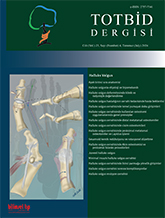
Juvenile hallux valgus (JHV) is one of the most common forefoot diseases in childhood and adolescence. Although the symptoms emerge around the age of 10-12, the deformity often begins much earlier and becomes evident as the child grows. The anatomy, pathophysiology, and clinical features of JHV differ significantly from adult hallux valgus. Almost all JHV patients have coexisting metatarsus primus varus or metatarsus adductus. Due to ongoing growth and open epiphyseal plates, a high rate of recurrence may occur, especially if the surgery performed at a younger age. So it is recommended that patients in the pediatric age group should avoid surgical treatment and insistently continue conservative treatment, if possible. Conservative treatment includes toe rollers, night splints and arch-supported insoles if coexisting flexible planovalgus present. It should be noted that these orthoses can not cure JHV or slow its progression, but they may symptomatically play a role in pain relief. Surgical treatment of JHV basically requires the use of `personalized` surgical techniques. Surgical treatments that can be applied in JHV can be listed as soft tissue alignment surgery, distal metatarsal osteotomies, proximal metatarsal osteotomies, double metatarsal osteotomies, medial cuneiform-first metatarsal arthrodesis, minimally invasive surgery and growth-directing treatments.